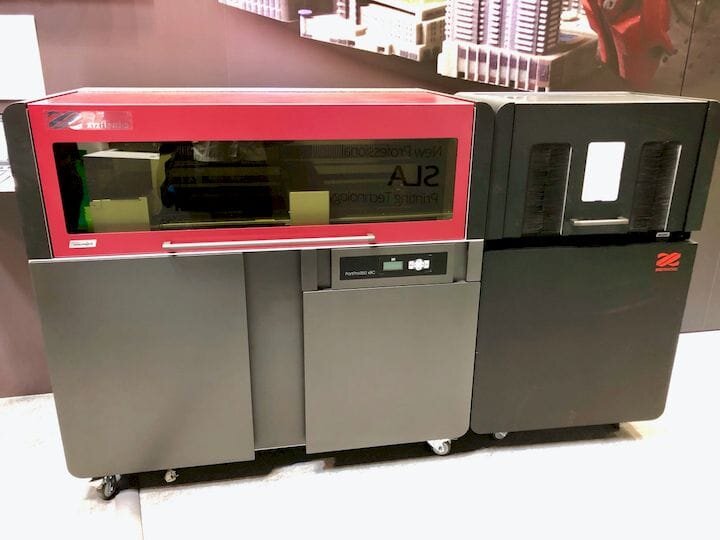![Could this be a production 3D printer? [Source: Fabbaloo]](https://fabbaloo.com/wp-content/uploads/2020/05/production-machine-1_img_5eb08fb8568bd.jpg)
Recently I keep seeing new 3D printers having a “production” tag on them. But what does this actually mean, and is the machine truly “production”?
To me, “production” means that the machine is able to continuously produce prints in a near-industrial setting. This is quite different from what we have been calling “professional” 3D printers.
Some time ago we defined what we felt was then a new class of device, called “professional”. These were desktop devices intended to be used by professions such as engineering, industrial design and occasionally architects. The major characteristics of a professional 3D printer are:
-
Office-ready: enclosed, air filtration, quiet
-
Easy to use: so that anyone in a profession could easily be trained to effectively use the machine
-
Workgroup-ready: enabling teams of professionals to share the device in an office setting
-
Breadth of Materials: Allowing engineers to use the materials truly required, including high-temperature materials
As you can see, these professional machines are quite different from the low-cost desktop devices that are essentially for hobby or experimental use.
But what makes a production 3D printer? Let’s take a look at the characteristics required:
Materials
A production machine should be able to use a wide variety of engineering materials, since “production” implies it is printing end-use objects
Continuity
The machine is intended to be used more or less continuously, and it should include features to allow this to occur, such as UPS, automatically switching material sources and so on.
Low Labor Requirement
Manufacturing operations seek the lowest cost, and thus a production 3D printer should minimize the amount of time required to operate the device by human labor.
Tracking
The machine should track its operations in some detail to allow periodic analysis for process optimization, as well as detailed billing to internal or external clients.
Robustness
A production 3D printer must be made from high-quality components that are unlikely to break and will last for a very long time. Such machines may be in near-continuous use for up to ten years.
Repeatability
The machine should demonstrate an ability to enable repeated production of objects to within a given tolerance, so that the overall quality of all prints is known.
Service
An outage on a production machine is a very serious matter, as every minute of downtime is money lost. Therefore, a production 3D printer must include a strong parts and service capability to ensure outages, when the occur, are not lengthy.
Safety
Use of a production 3D printer may well occur within a factory setting, which invariably has — or should have — a stringent safety regime. The production 3D printer should be able to easily integrate into that regime by including instant power-off switches, safety labelling, etc.
Grouping (Optional)
Sometimes multiple production machines are in use to amplify the print throughput. Features to allow use of multiple machines, such as group networking, cloud job dispatch and others are very helpful in this regard.
Those are the aspects that immediately come to my mind when someone proposes a “Production 3D Printer”. I examine the machine’s specifications to see if it includes all of these features.
Usually, they do not.
But that does not mean I am disheartened. I am encouraged that so many parties are now attempting to build true production machines. Some have even achieved this, in particular the long-term manufacturers who have done so for many years. It’s the newcomers who sometimes have yet to discover all the features required of a true production 3D printer.


1 comment
Comments are closed.